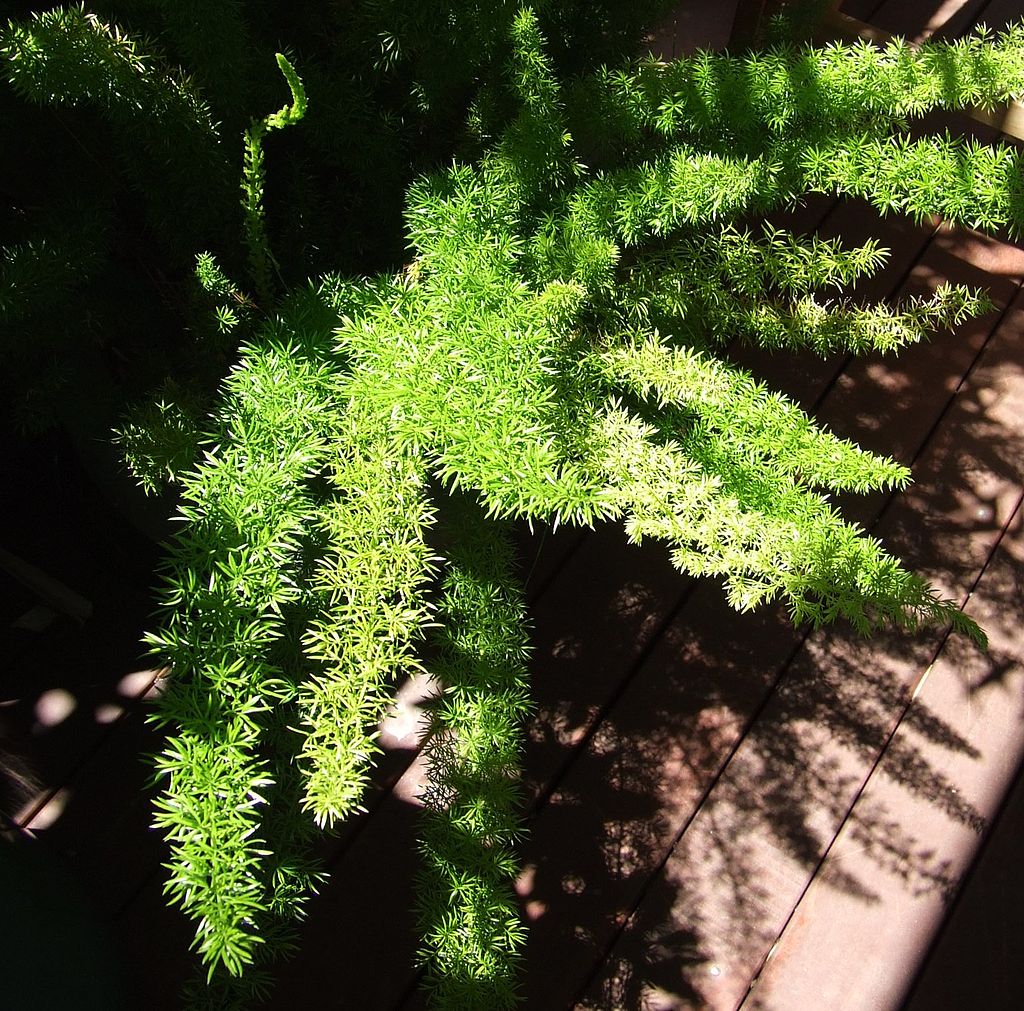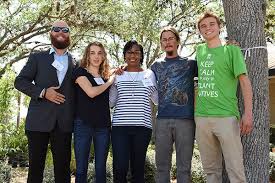Uncontrolled urban development and the invasion by aggressive non- native species of plants (also known as alien, introduced, or exotic) are responsible for the loss of natural habitat.
While we all care about the health of our landscapes and gardens, most of us are completely unaware of this kind of “alien” invasion that is harming our natural ecosystem.
Invasive plants are plants that have been introduced from other regions and exhibit a tendency to spread out of control in their new habitats. These plants spread rapidly like wildfire and are able to establish themselves within existing native plant communities disrupting the integrity of the natural ecology. The loss of native plants adversely affects the native biodiversity and also reduces the food and shelter on which insects, birds and other wildlife and pollinators depend. It can also alter natural processes such as fire frequency and water flow.
Identifying 5 Invasive Plants
Many non-natives have been introduced as landscape plants and quickly become unmanageable. The best way to control them in the landscape is to familiarize oneself with what plants are aggressive and invasive and simply avoid planting them. You can get a complete invasive plant list for your region, check out The Florida Exotic Pest Plant Council site or visit our nursery for more information. Additionally, you can do a Google or Bing search with each plant on the list to help you better identify them by images and descriptions.
To help you get started, here are some of the worst offenders that are commonly found in Florida landscapes. And while they are all invasive plants, they are still widely available in garden centers and nurseries.
Mexican Petunia (Dwarf and Regular)- Ruellia simplex
Origin: Mexico
Description
The Mexican Petunia is an evergreen, shrubby, rhizomatous perennial that can form colonies of stemmy stalks standing 3-4’ tall in the wild, but to 2-3’ tall in gardens. The woody-based stems branching from the ground have elongated, lance-shaped, dark green leaves (to 6-12” long and ¾” wide). Tubular, 5-lobed lavender to violet colored flowers bloom in loose purple-stemmed clusters from the upper leaf axils. Mexican petunia can easily be identified by dark green leaves arranged oppositely at the nodes and the blue-purple flowers on long stalks. The smaller variety of this invasive plant, standing at less than 1 foot tall is known as Dwarf Mexican Petunia. While these are very pretty plants, they are invasive and non-native to Florida—meaning they will wreak havoc on your garden. They are wolves in sheep’s clothing.
Management Strategies
It invades habitats rapidly and is very adaptable, to all kinds of environmental conditions. Once established in the wild, plants are very difficult to eradicate—as is the case with the Mexican Petunia. It is a sterile cultivar and these plants can spread invasively through self-seeding and rhizomes. Both seeds and bits of rhizome can also float in water.
Do not plant Mexican Petunia in the landscape or in pots. You can remove small groups of this plant by hand-pulling. Aggressive tillage and mowing have been found to be effective too. Mexican Petunia can also re-sprout from crowns or rootstocks so all the vegetative material has to be removed to prevent regrowth.
Sprenger’s Asparagus Fern/Asparagus Fern- Asparagus aethiopicus
Origin: South Africa.
Description
Asparagus fern is a fast spreading, evergreen that can grow to 60 cm (2 ft) in height with a three-foot spread. It has light to bright green to yellow-green, fernlike, delicate leaves, and minute thorns. This is a widely planted ground cover because of its arching stems and branches that cascade and trail. The Sprenger’s Asparagus Fern is rather easy to identify from tiny, scale-like spines at bases of branchlets (cladophylls). In spring, it produces small, waxy, white or pinkish white flowers with 3 petals and 3 sepals. After flowering, small clusters of bright red berries appear that are 8 mm (½ inch) in diameter, which are eaten by birds and rodents.
Management Strategies
Asparagus fern is propagated by division of tuberous crowns or by seeds. Seeds are spread by birds.
Asparagus fern displaces native ground cover and understory shrubs and is listed as a Category I invasive by the Florida Exotic Pest Plant Council. Remove any existing plantings and potted plants before seeds get dispersed by birds. Cut out and apply herbicide. Make sure to remove even the roots from the ground.
Camphor Tree- Cinnamomum camphora
Origin: Eastern Asia (China, Korea, Taiwan)
Description
These evergreen trees can grow to about 65 to 100 feet in height with a dense canopy of green or reddish green branches. They have shiny green leaves that alternate with smooth, wavy margins. Camphor trees can be identified by the strong camphor smell when the leaves are crushed. Tiny and greenish-white flowers appear in May followed by small, rounded pea-sized berries that go from red to black between July and February
Management Strategies
Camphor is a prolific seed producer and seedlings and root sprouts can be found in abundance near mature trees. These trees have invaded undisturbed natural mesic hammocks, upland pine woods, and scrubland (Langeland and Burks, 1998) as well as fencerows and vacant lots. The fruits are spread by animals, water, and gravity. It has been listed as a Category I invasive species by the Florida Exotic Pest Plant Council
Do not plant this non-native tree in your yard. If one already exists in your yard, collect all fruits in bags and dispose in household waste to prevent it spreading. Pull the seedlings out manually when soil is moist to ensure that all roots get removed. Plant a young, native tree to eventually replace the camphor’s shade.
Oyster Plant (Tradescantia spathacea/ Rhoeo discolor)
Origin: Mexico, Belize, Guatemala and parts of the Caribbean.
Description
The Oyster plant is a succulent small and low-growing plant forming rosettes of dagger-shaped leaves that appear metallic green on top, purple underneath and have fleshy rhizomes. It gets its name from the spathe-like large bracts which surround the white flowers with three petals and six stamens. The flower-stalks are about approx 15 mm long and re-curved. This attractive foliage plant reaches to about 1 foot (30 cm) tall. This species grows both in soil and also on rocky walls and palm trees in dry to moist woodland.
Management Strategies
Oyster plants can reproduce by seeds, cuttings, and discarded plants. It flowers and seeds all year, given the right conditions, and self-pollinates or gets pollinated by insects. It spreads through yard waste as even broken pieces re-sprout easily. It easily creates a dense groundcover which stops native plants from germinating on the forest floor. Clear spent flowers and leaves properly and thin out denser clumps to prevent its spread.
White Fountain Grass (Pennisetum Setaceum)
Origin: East Africa, tropical Africa, Middle East.
Description
White fountain grass is thin leaved, ornamental grass that blooms beautiful white flower spikes consistently all year round. This perennial bunch grass is drought-tolerant, cold-hardy and grows rapidly reaching approximately three feet in height. The flowers and seeds form a dense spray from stalks that can reach 1.2 m in height
Management Strategies
Fountain grass has become invasive as it can re-seed and spread out. Seeds are dispersed by wind and water into natural areas from cultivated plants. White fountain grass requires active management and seedlings need to be hand pulled. The larger clumps of grass sprigs can be dug out using a pick or shovel. Remember to always bag or destroy the seed heads to stop any further seed dispersal.
Plant Native
To avoid the chaos that non-native plants can cause in your landscape, be sure to consult with a professional before installing any plant in your garden or yard. The extra time spent ensuring that your landscape is native-friendly will be worth it in the long run.
Visit Wilcox Nursery And Landscaping to learn about native plants and sustainable landscape services. Find even more resources on our Go Native Blog.



